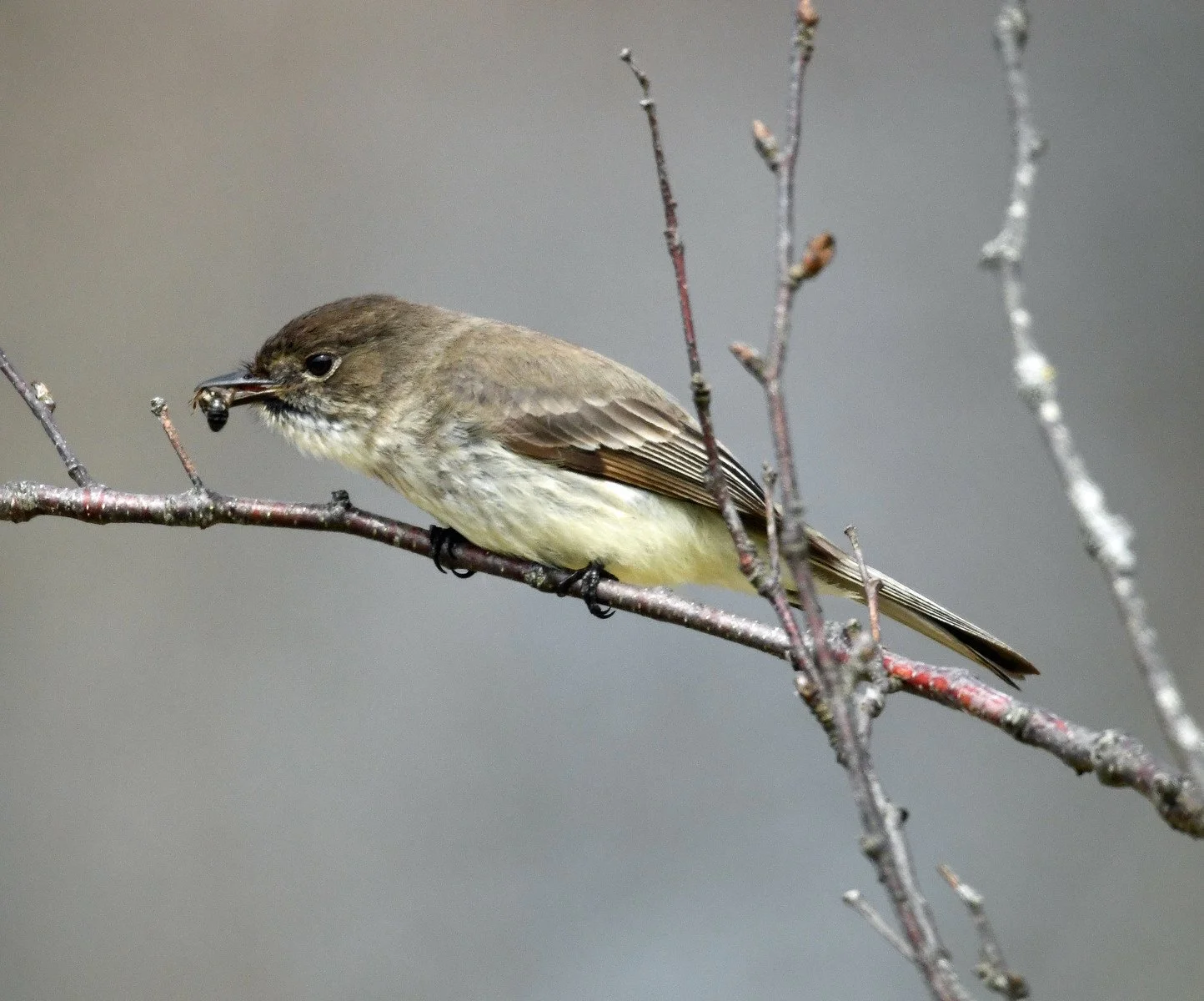I suspect that there are a good number of common and interesting birds that many people don’t see – brown or gray blurs that don’t make enough of a first impression to get our attention. I also suspect that this summer migrant is one. He’s an Eastern phoebe (Sayornes phoebe) that I saw Easter Sunday, my first phoebe of the year. (Sex assumed; only phoebes can tell males from females by sight or sound and both sexes sing.)
He's a small “flycatcher,” a group of birds that have the amazing ability to catch flying insects on the wing. Here he is eating a hard-to-identify breakfast:
Phoebes often sit upright on a twig and bob their tails while identifying themselves with a very raspy “FEEE-BEEE” song. They’re not shy; they often build their nests on or near human residences.
Eastern Phoebes are famous for allegedly being the first bird species to be banded in North America. The bander was an 18-year-old John James Audubon doing an experiment in Pennsylvania in 1804. According to Audubon’s account (which some dispute), he used silver thread to band young phoebe nestlings and documented their return to the same area the following year. (Images taken in Brooklin, Maine, on April 17, 2022.)

